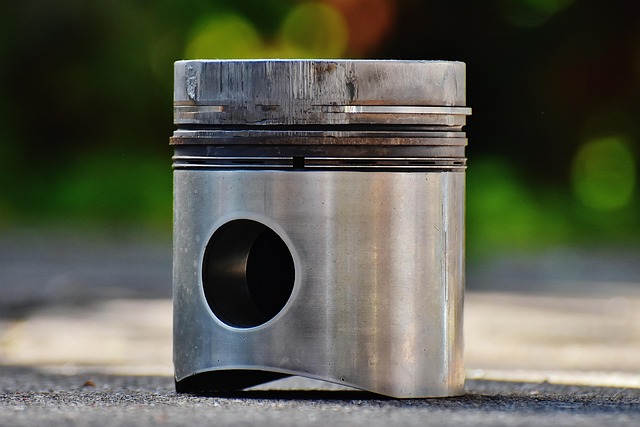Looking to register your car in California? This comprehensive guide walks you through the process, from understanding key requirements to receiving your registration certificate. We cover essential steps like gathering necessary documents and performing a DMV VIN verification, ensuring a smooth experience. By following these simple steps, you’ll be on your way to becoming a California car owner in no time.
- Understand California Car Registration Requirements
- Gather Necessary Documents for DMV Visit
- Perform VIN Verification: Step-by-Step Guide
- Submit Application and Pay Fees at DMV
- Receive Your Registration Certificate
Understand California Car Registration Requirements

Before registering your car in California, it’s crucial to understand the state’s specific requirements for vehicle registration. The California Department of Motor Vehicles (DMV) mandates that all vehicles operating within the state be properly registered and inspected to ensure safety and roadworthiness. One essential step is the DMV vin verification process, which involves a thorough inspection of your car’s unique Vehicle Identification Number (VIN). This process not only confirms the vehicle’s identity but also checks for any outstanding issues or recalls.
A key aspect of this verification is ensuring that the VIN displayed on critical components like the engine and chassis matches the one provided by the manufacturer. For convenience, many residents opt for a mobile vin inspection service, allowing them to complete this requirement from the comfort of their homes or workplaces. This alternative approach simplifies the process and saves time, making it easier for California residents to meet their car registration obligations.
Gather Necessary Documents for DMV Visit

Before heading to the DMV, ensure you have all the essential documents ready. This includes your vehicle’s registration certificate from the previous state (if applicable), proof of insurance, and a valid driver’s license. Additionally, you’ll need to provide a completed Vehicle Registration application form, which can be obtained from the California DMV website. A crucial step is to undergo a DMV VIN verification process, which involves checking the vehicle identification number (VIN) for any discrepancies or potential fraud.
For a smoother experience, consider using a mobile vin inspection or mobile vin verifier service to complete this requirement beforehand. These services offer convenient and accurate VIN checks, allowing you to resolve any issues before visiting the DMV. This proactive approach can save time and ensure that all necessary steps are taken during your actual DMV visit.
Perform VIN Verification: Step-by-Step Guide

To start the registration process for your car in California, perform a DMV VIN verification to ensure the vehicle’s authenticity and history. Here’s a step-by-step guide:
1. Gather Documents: Collect all necessary paperwork, including the vehicle’s title, registration, and identification documents for both you and the previous owner if applicable.
2. Obtain a Mobile VIN Verifier: You can utilize a mobile vin verifier app or service to check the Vehicle Identification Number (VIN) online. These tools are convenient as they allow you to conduct the inspection from almost anywhere. They work by cross-referencing your VIN with national databases to provide detailed vehicle history information.
3. Input the VIN: Use your mobile device to input the 17-character unique identifier found on the vehicle’s registration label, engine, or chassis. Popular mobile vin verifier apps include Carfax and AutoCheck.
4. Access Vehicle History: The app will retrieve and display a comprehensive report detailing any accidents, ownership history, outstanding loans, and maintenance records associated with that specific VIN.
5. Review and Verify: Carefully review the information provided to ensure its accuracy. If everything checks out, proceed with your car’s registration at the California DMV office. If discrepancies are found, address them before completing the registration process.
Submit Application and Pay Fees at DMV

After gathering all the required documents, it’s time to submit your application and fees at the California Department of Motor Vehicles (DMV). This crucial step involves filling out Form MV-51, which is the Application for Title and Registration. Here, you’ll provide detailed information about your vehicle, including its make, model, year, and unique Vehicle Identification Number (VIN). Along with this form, you’ll need to pay the necessary fees, which vary based on your vehicle type and registration period.
One convenient option available in California is the mobile VIN verification service, allowing you to get a quick and accurate VIN inspection right from your smartphone or tablet. This digital approach streamlines the process, ensuring that your application is complete and valid before submitting it to the DMV, saving you time and effort.
Receive Your Registration Certificate

After completing the registration process, it’s time to receive your official Registration Certificate. This document is crucial for your vehicle’s legal status in California. The Department of Motor Vehicles (DMV) will provide you with this certificate, which verifies that your car has passed all required inspections and is compliant with state regulations.
One essential step before receiving your certificate is undergoing a Vehicle Identification Number (VIN) verification process. This can be done through the DMV’s online services or by utilizing a mobile VIN verifier, ensuring an efficient and accurate check. The VIN inspection confirms the vehicle’s authenticity and history, which is vital for both owners and potential buyers to ensure a secure and legitimate registration.
Registering a car in California is a straightforward process, but it requires careful preparation. By understanding the state’s requirements, gathering all necessary documents, and completing the VIN verification step-by-step guide, you’ll be well on your way to securing your vehicle’s registration. Remember to visit your local DMV, submit a complete application, pay the required fees, and soon enough, you’ll receive your registration certificate, ensuring your car is legally registered and ready for California’s roads. Don’t forget, a proper dmv vin verification is crucial before initiating the registration process.
